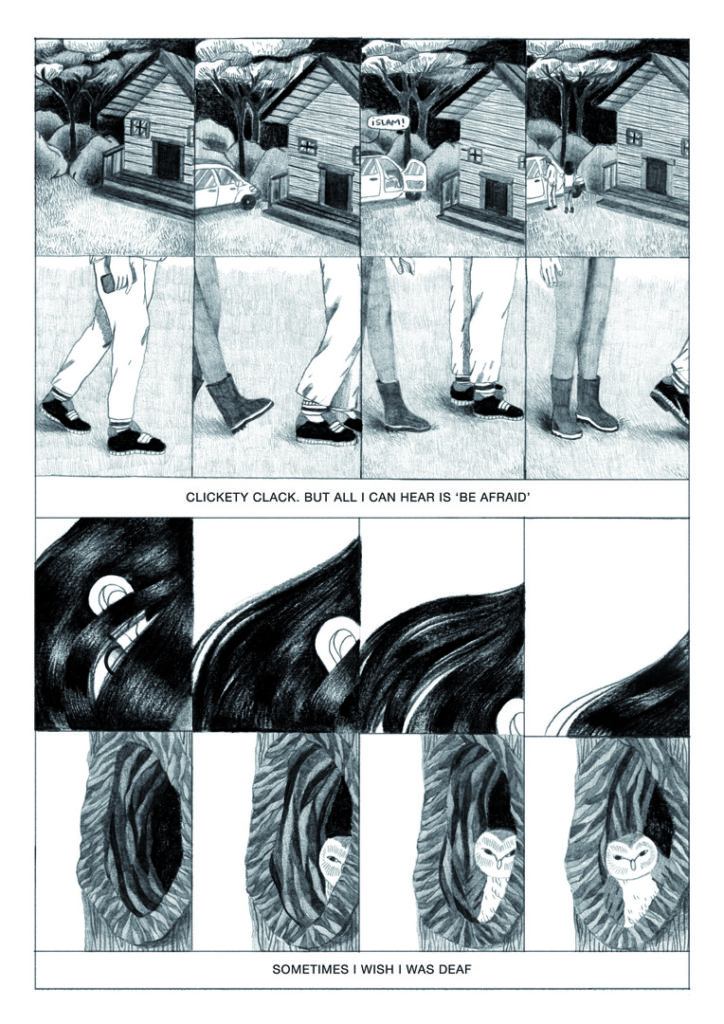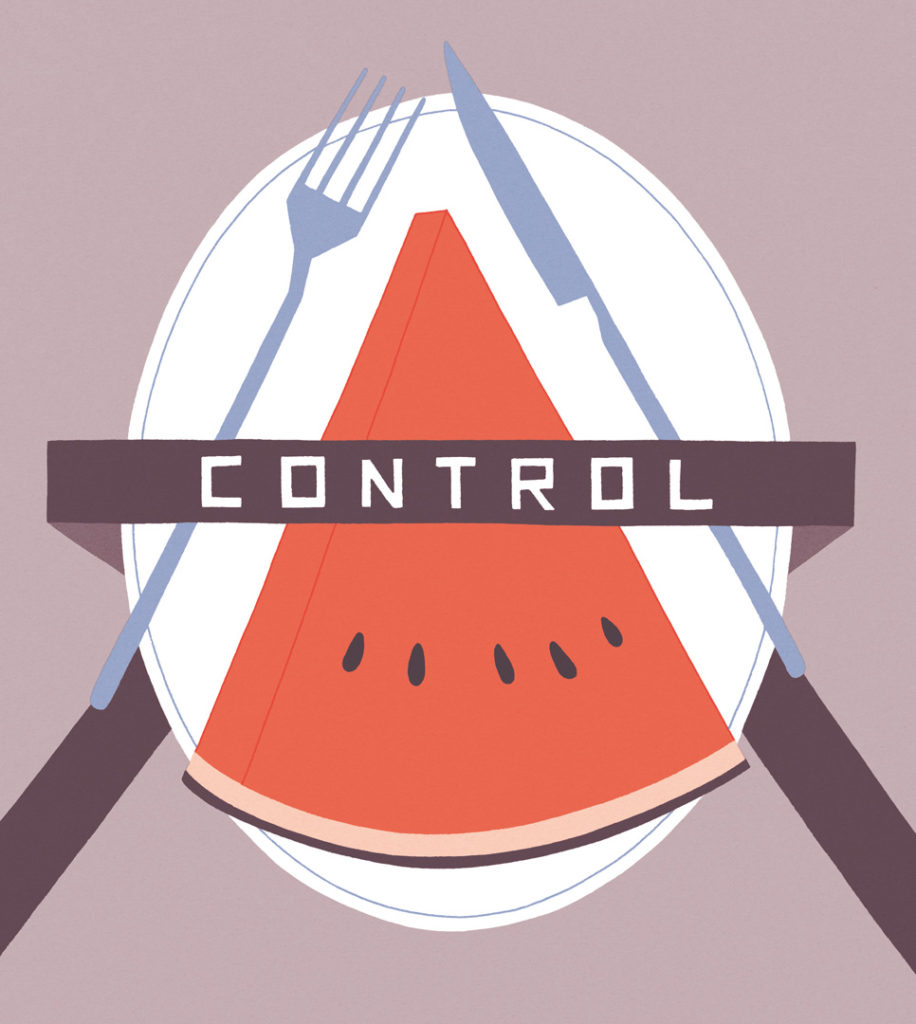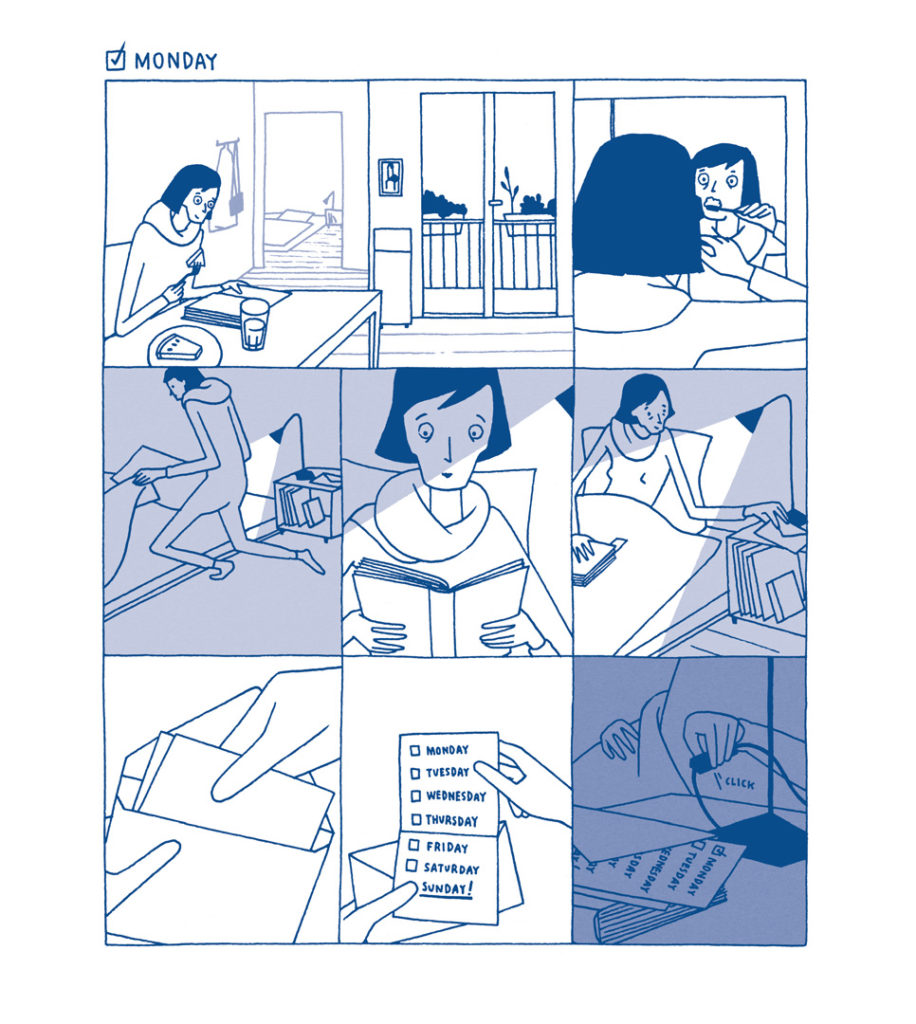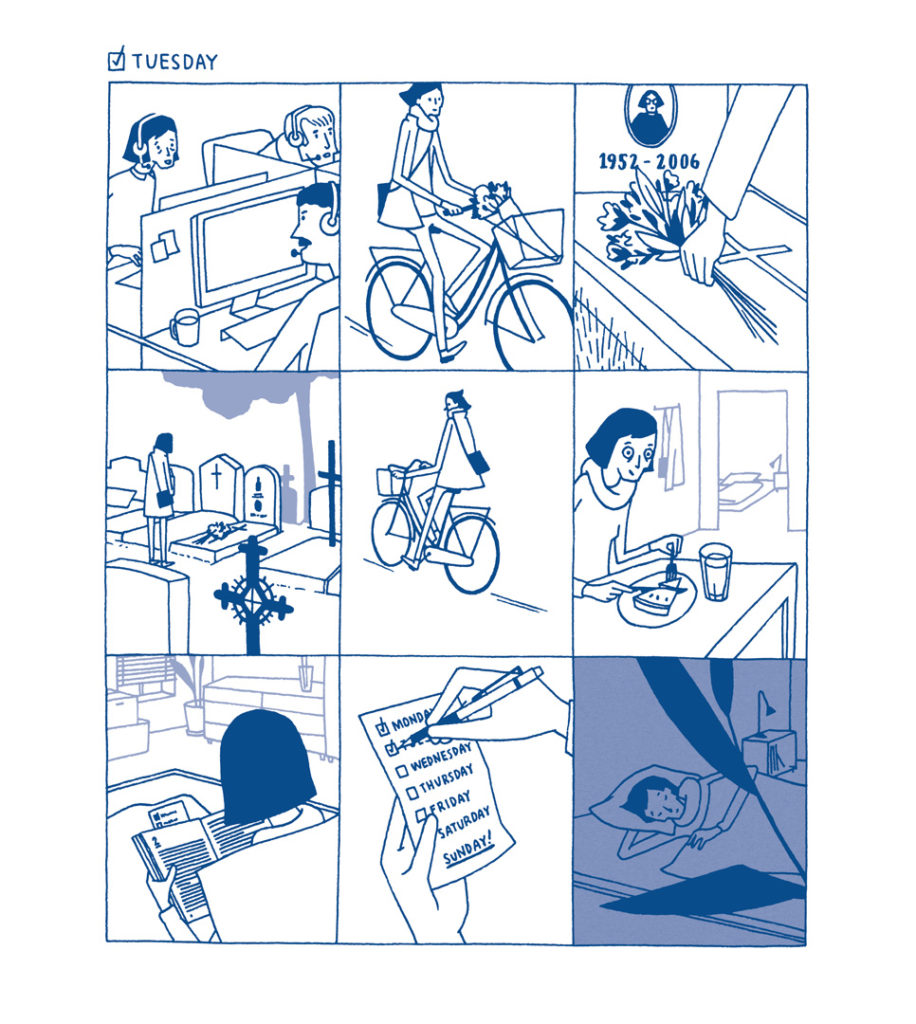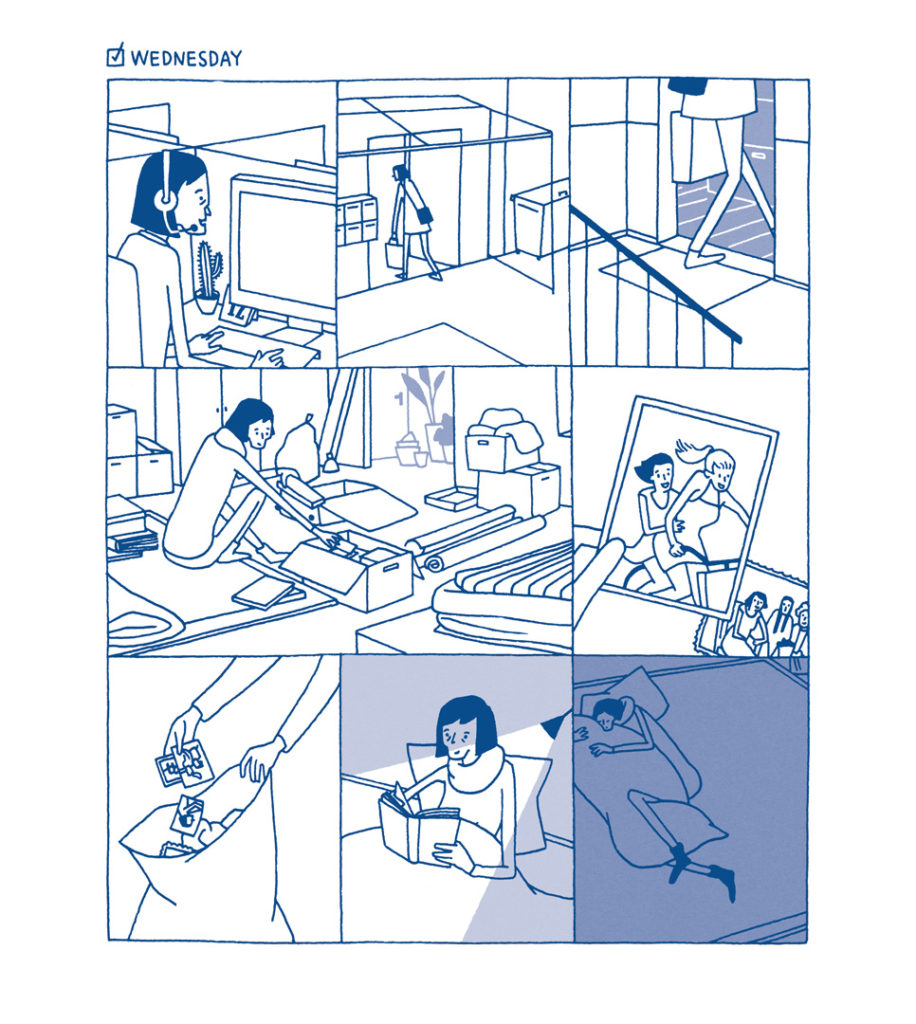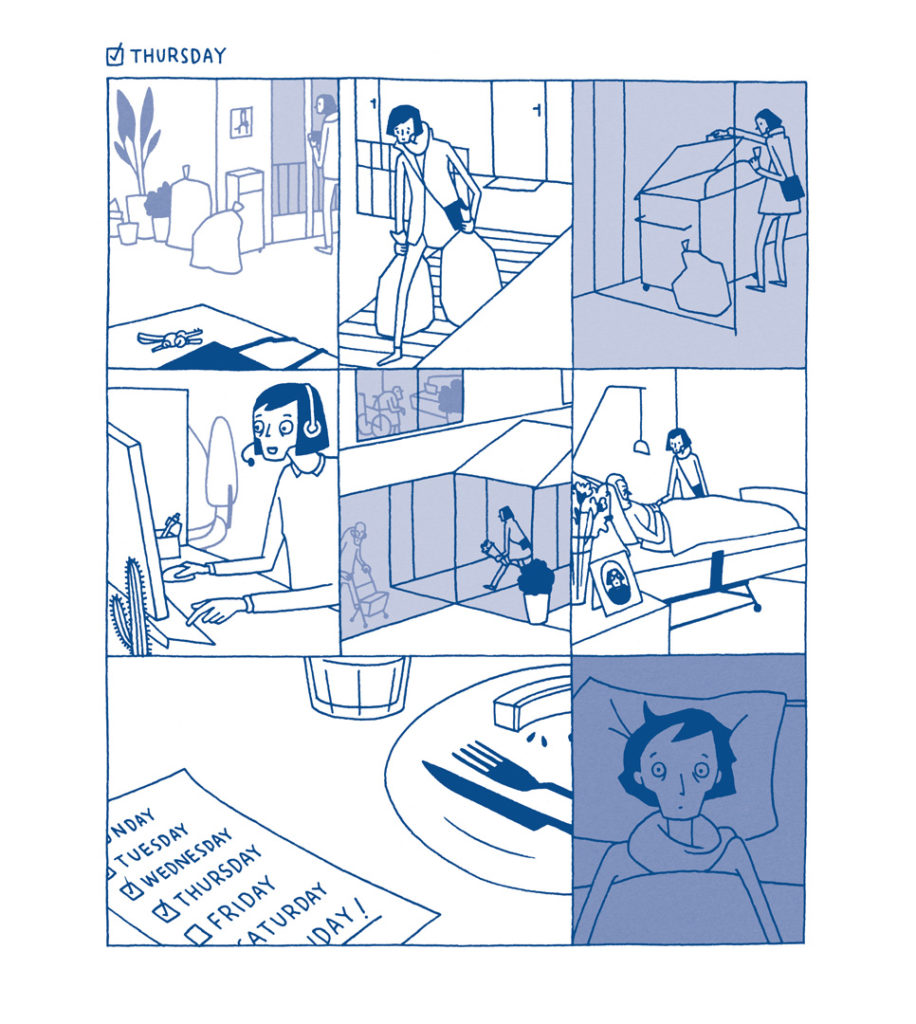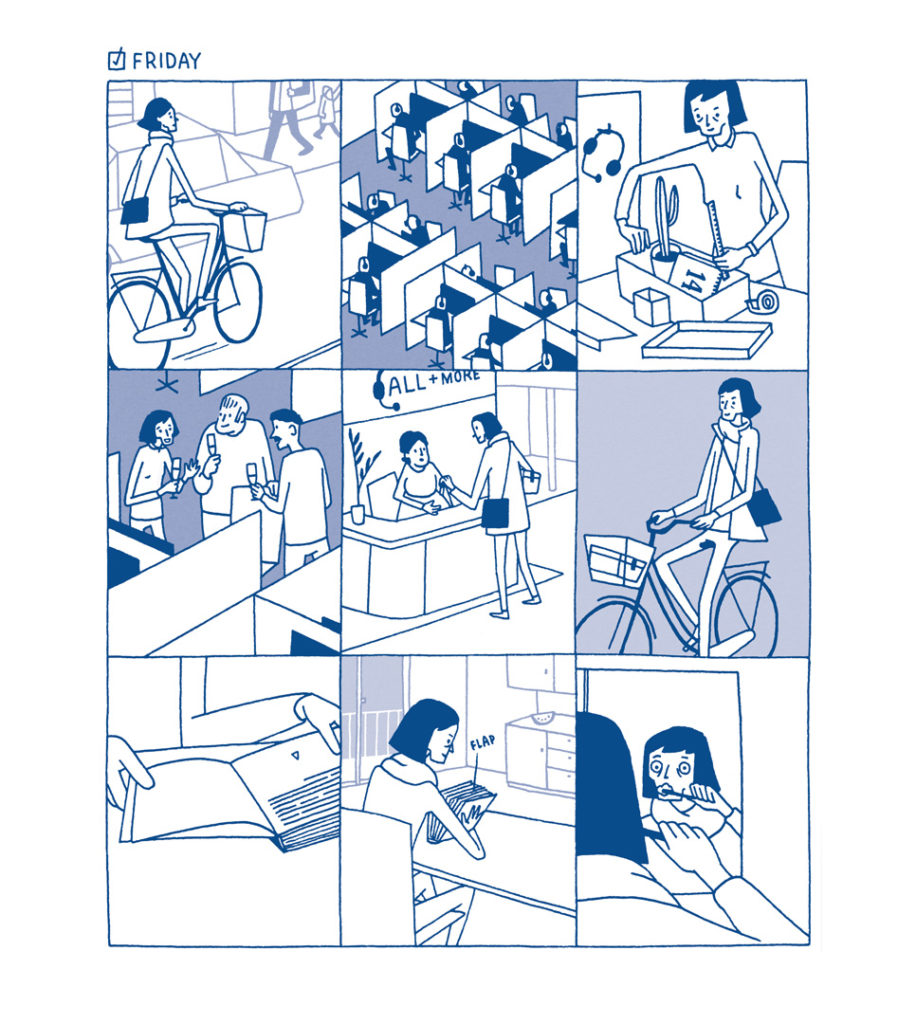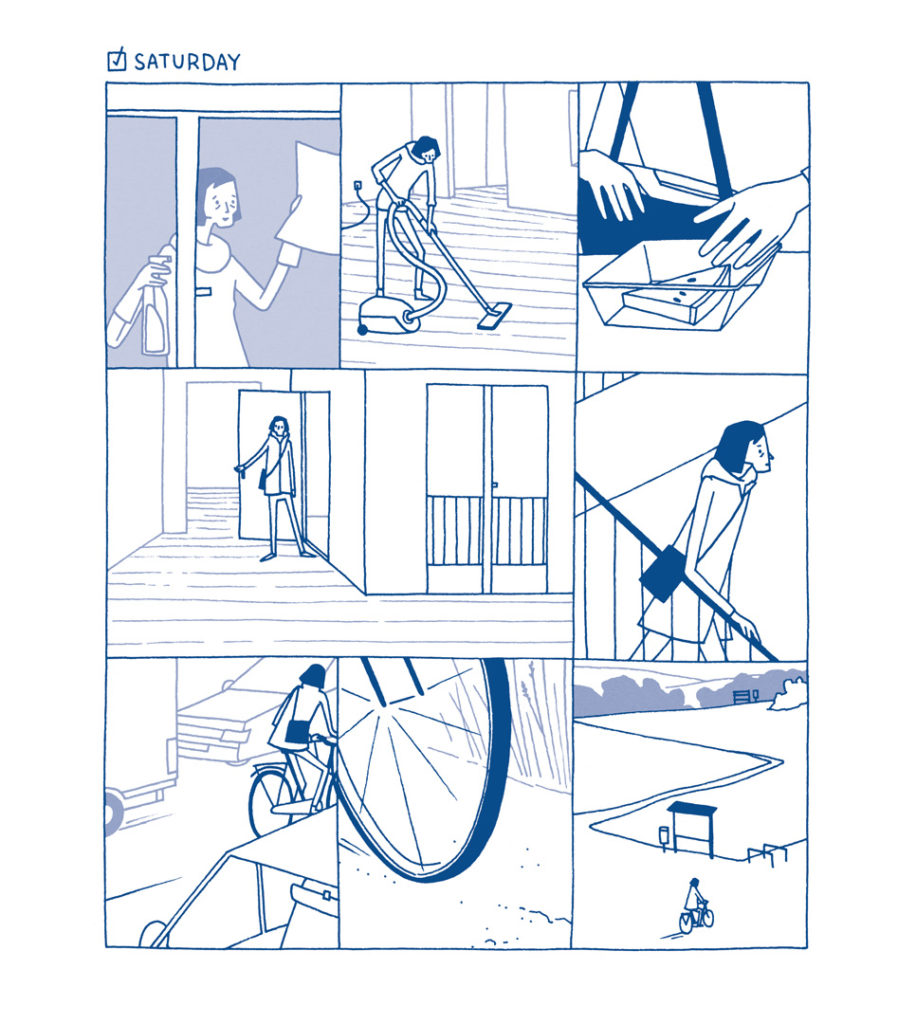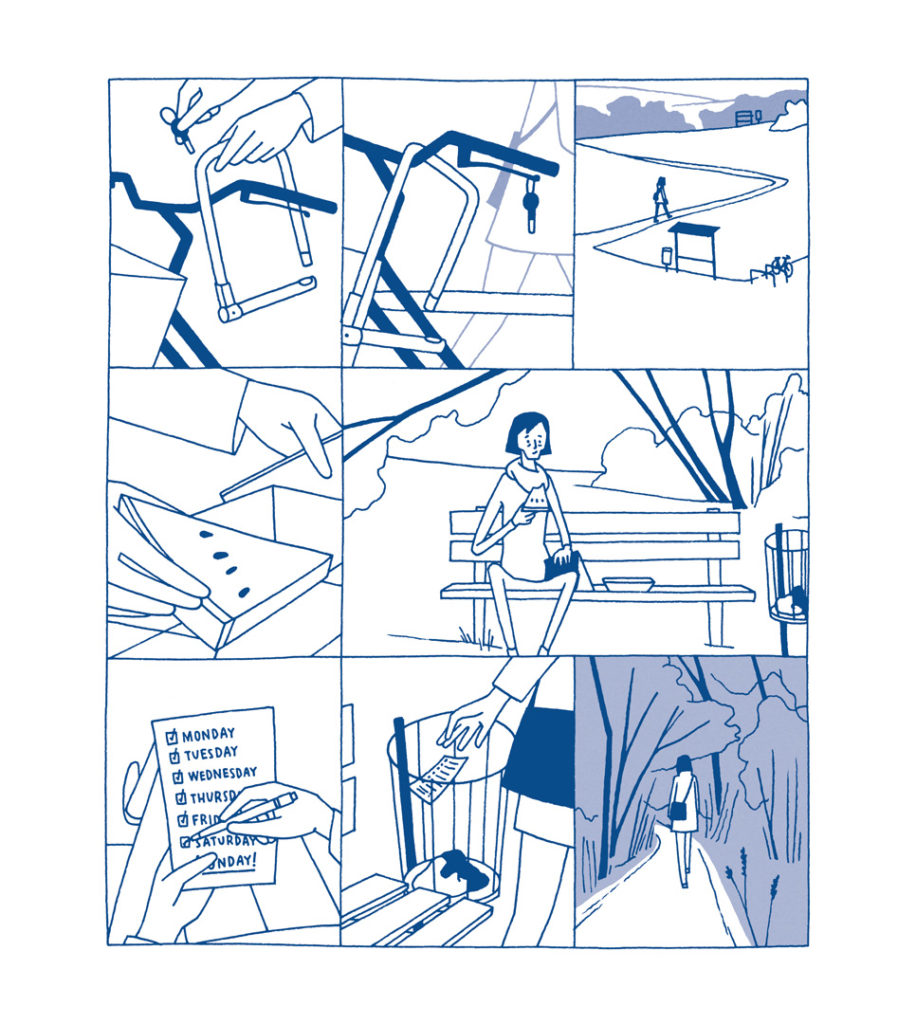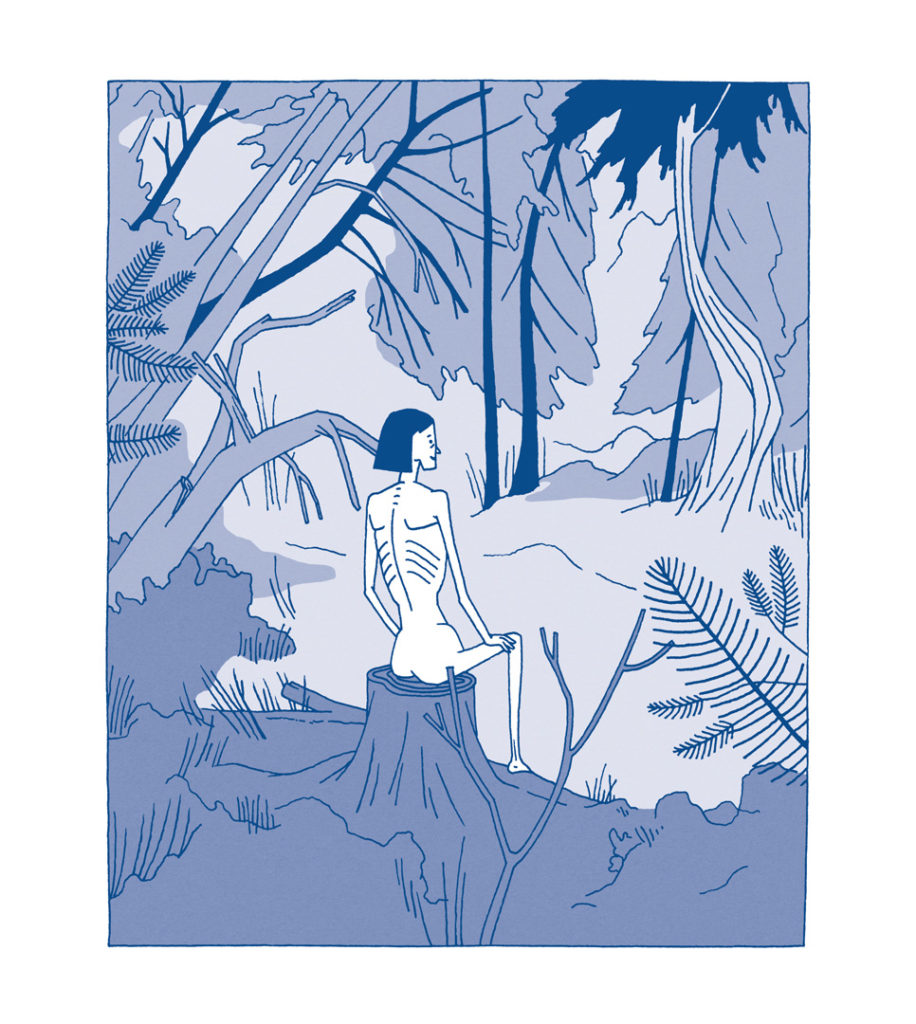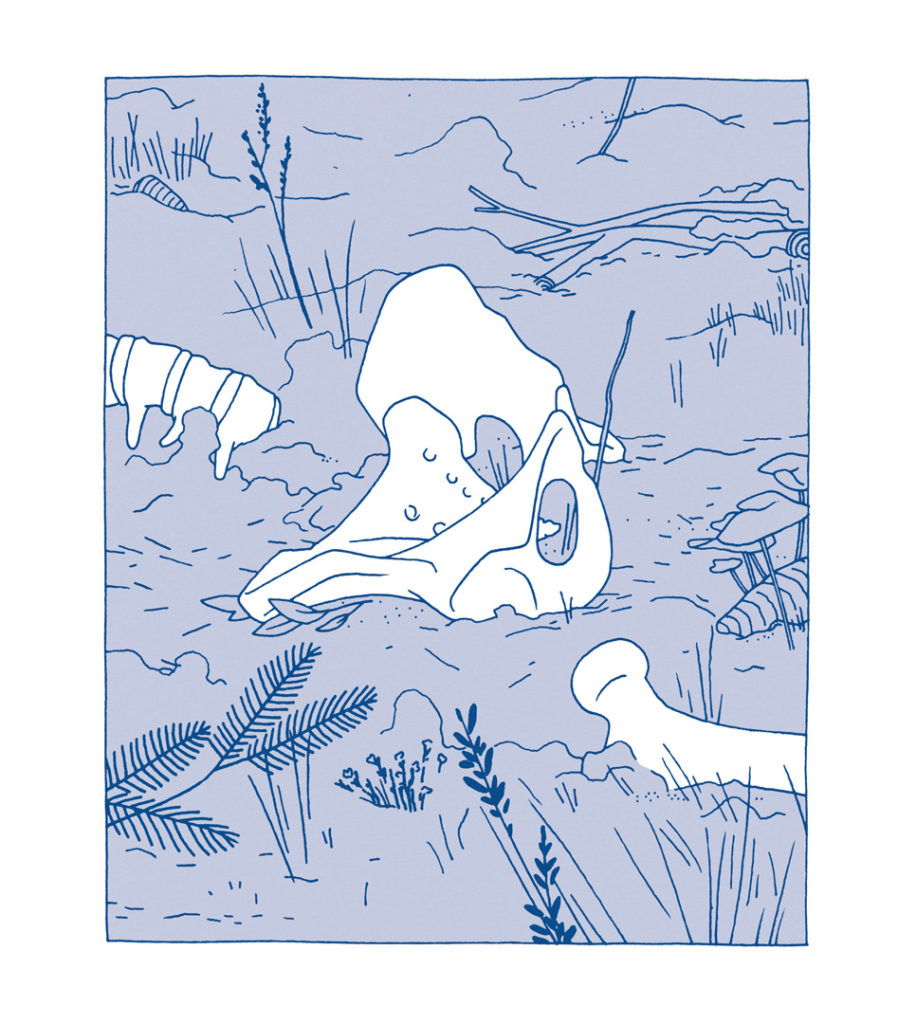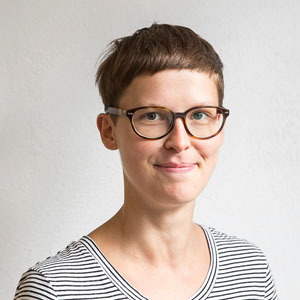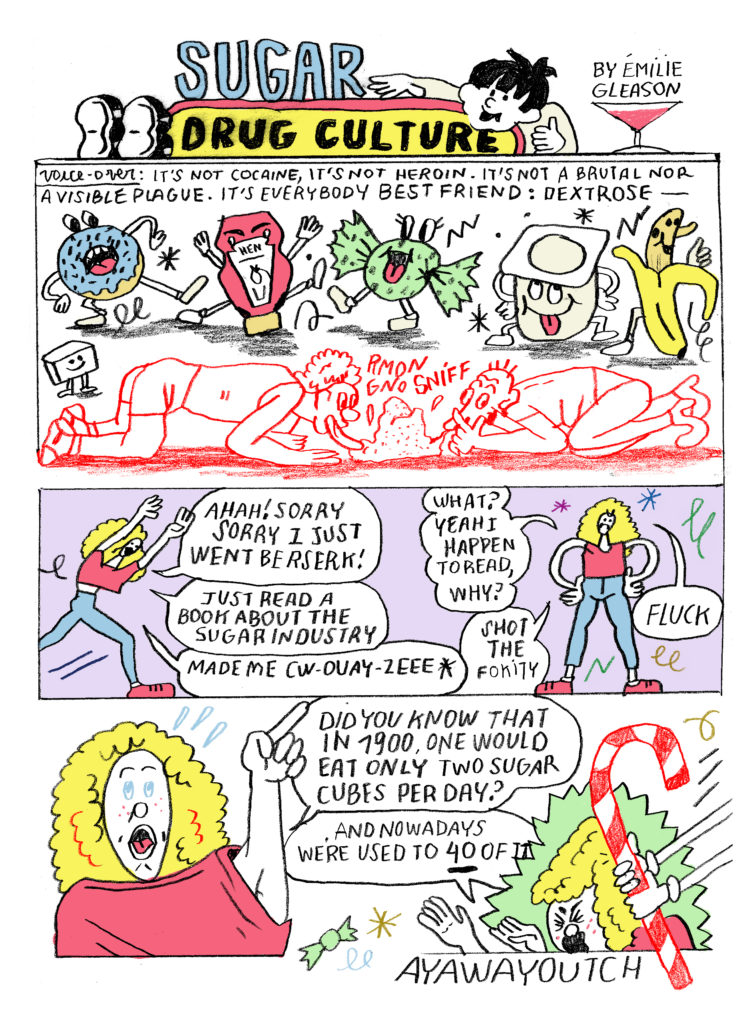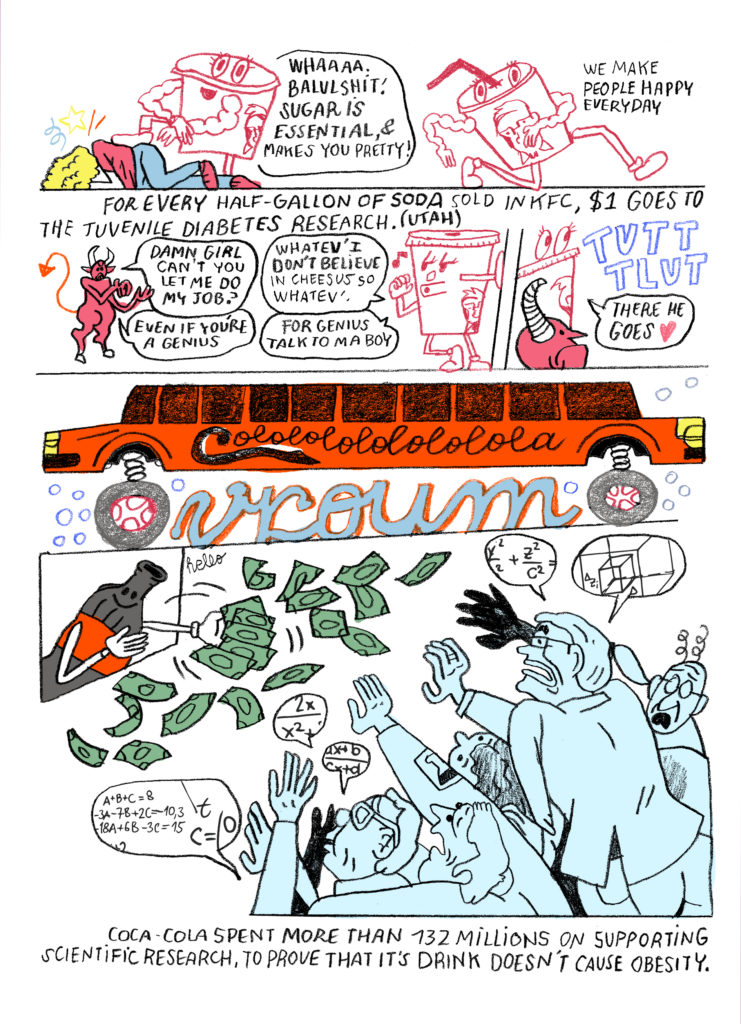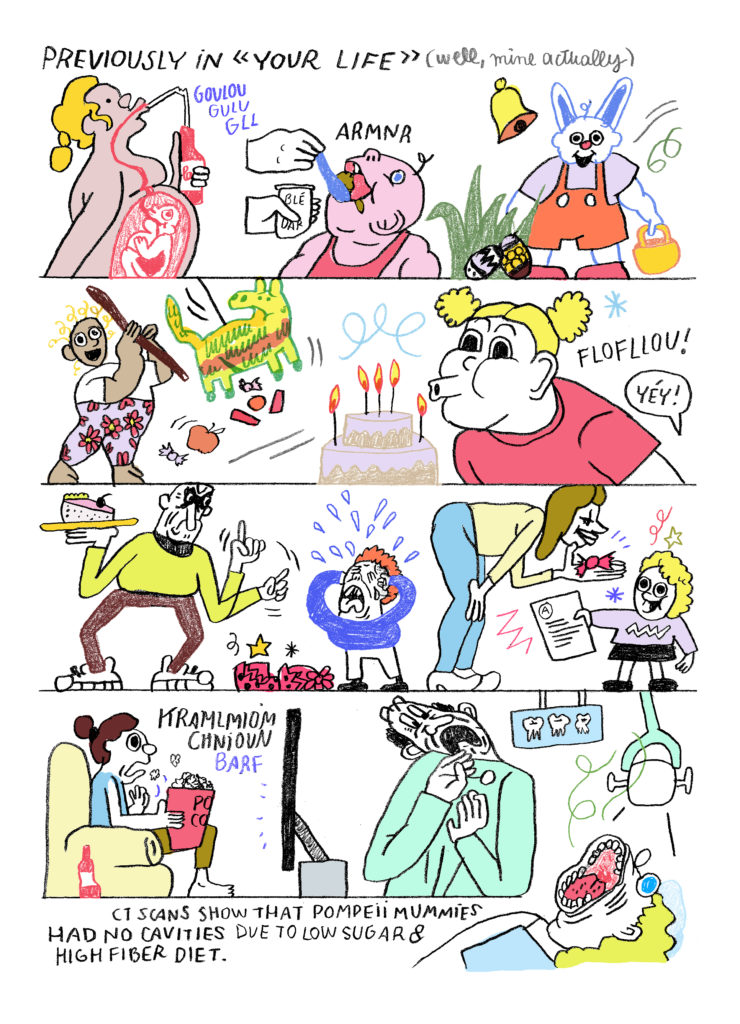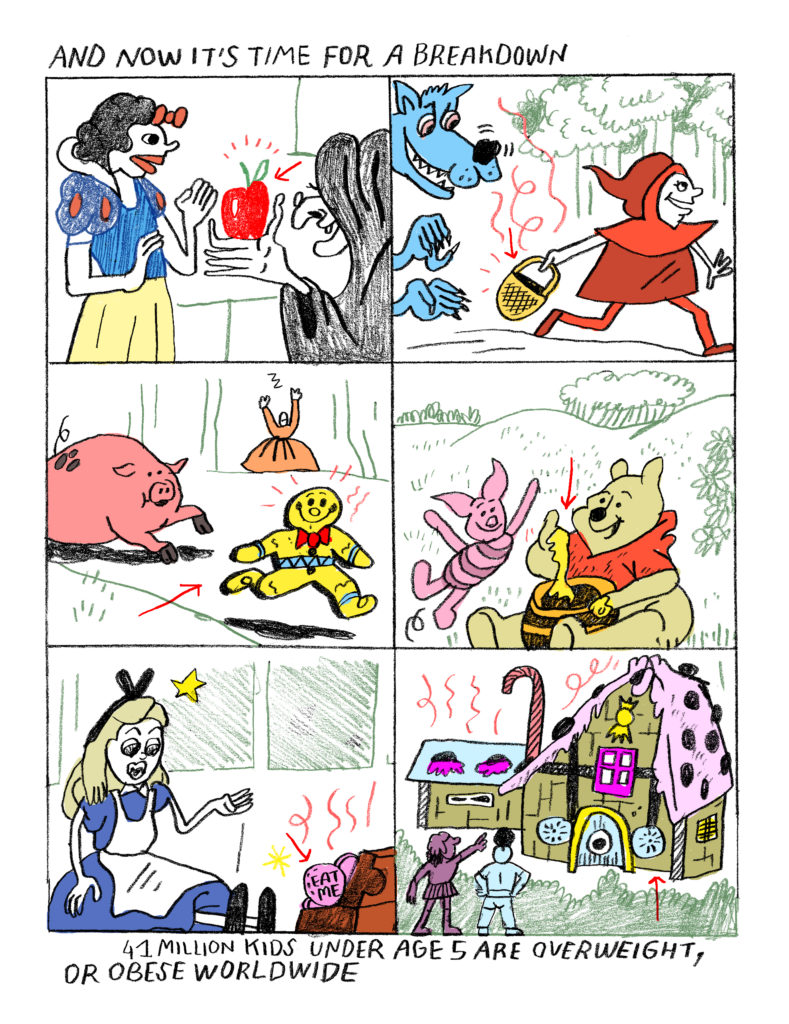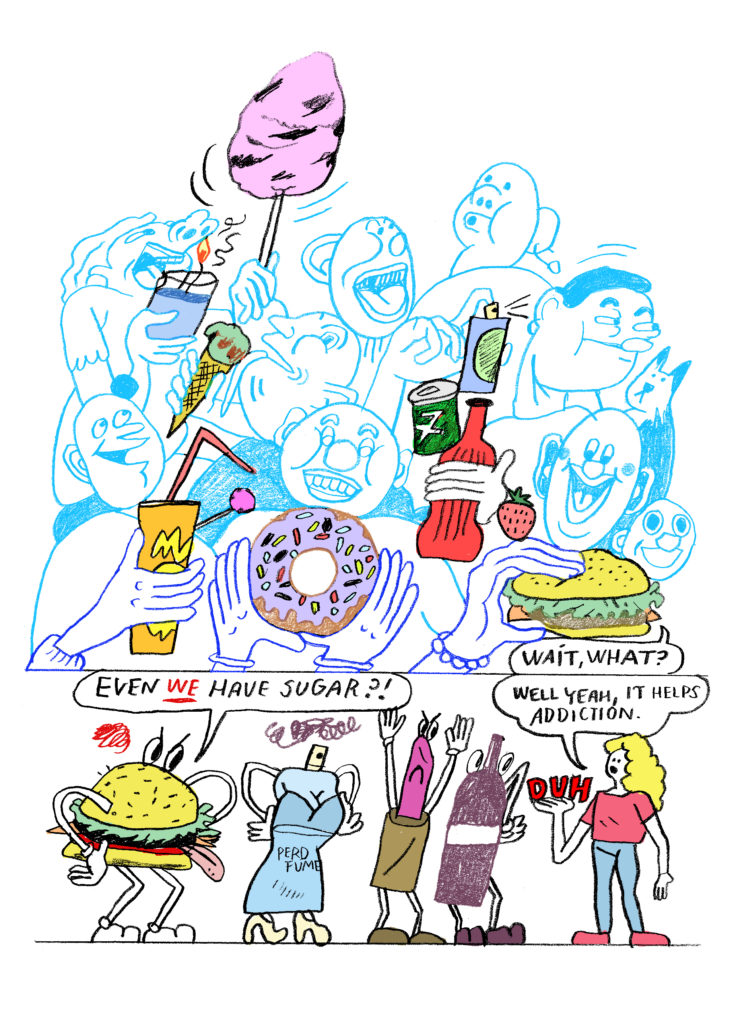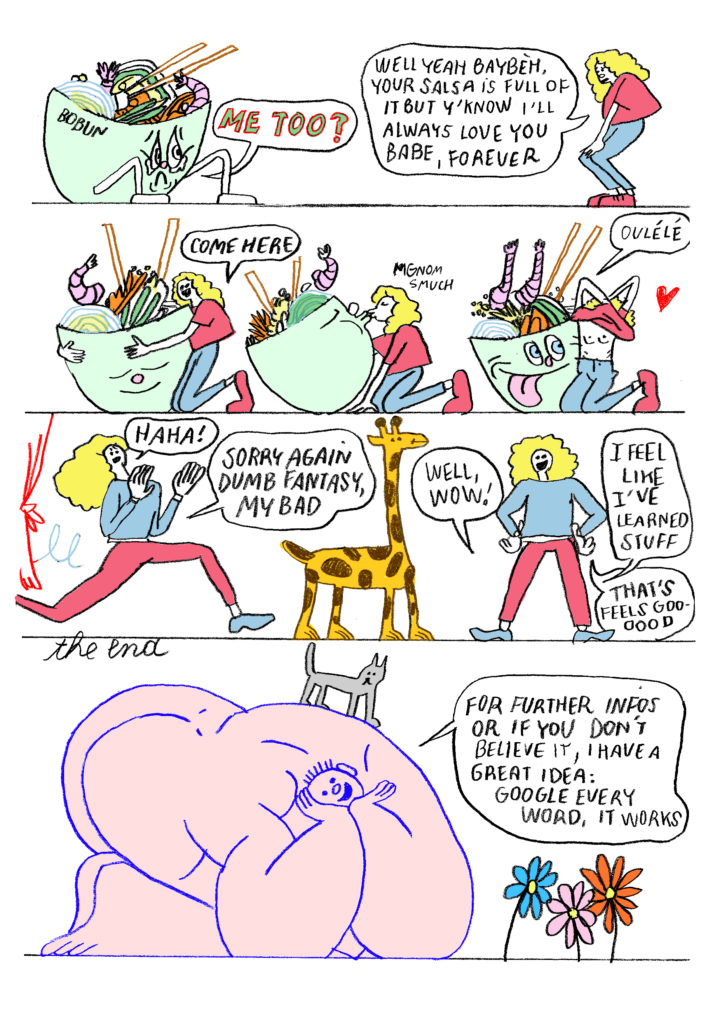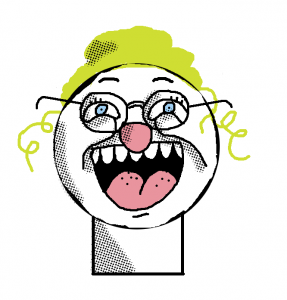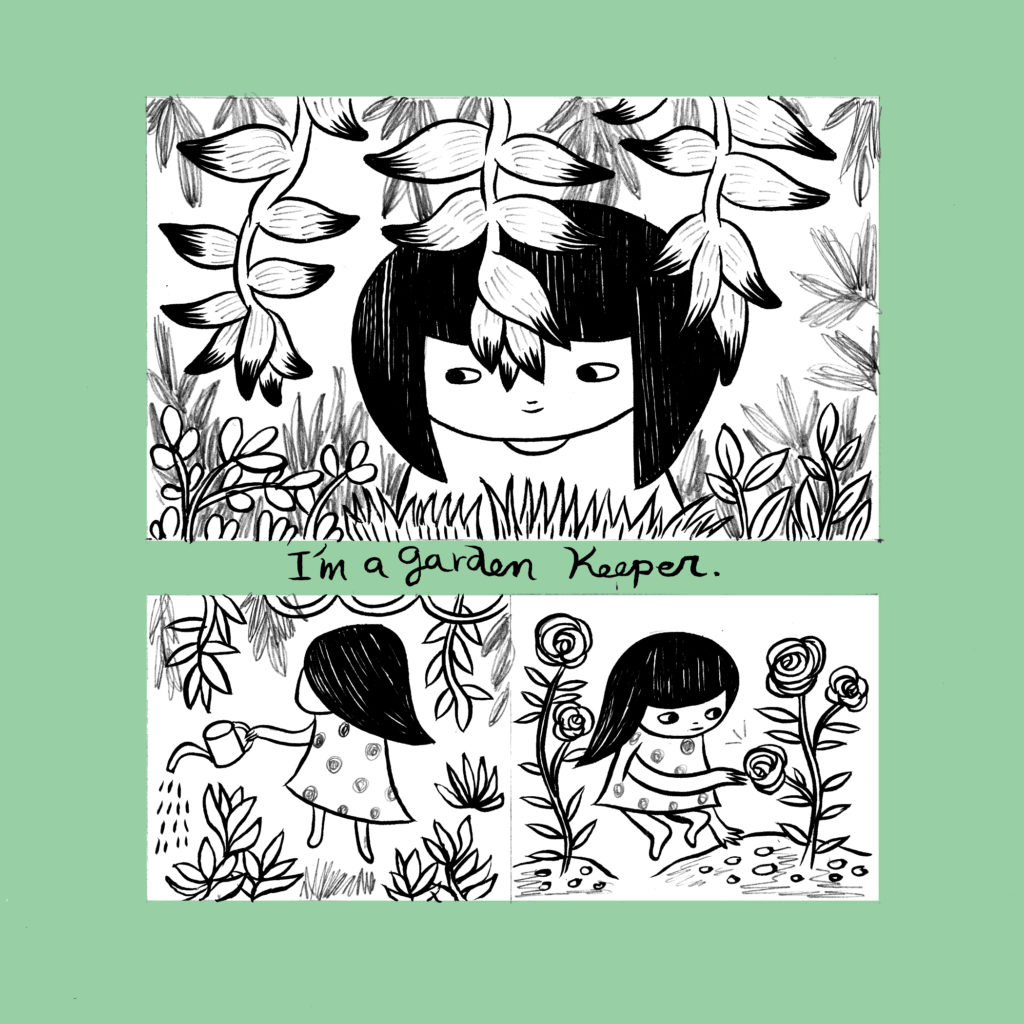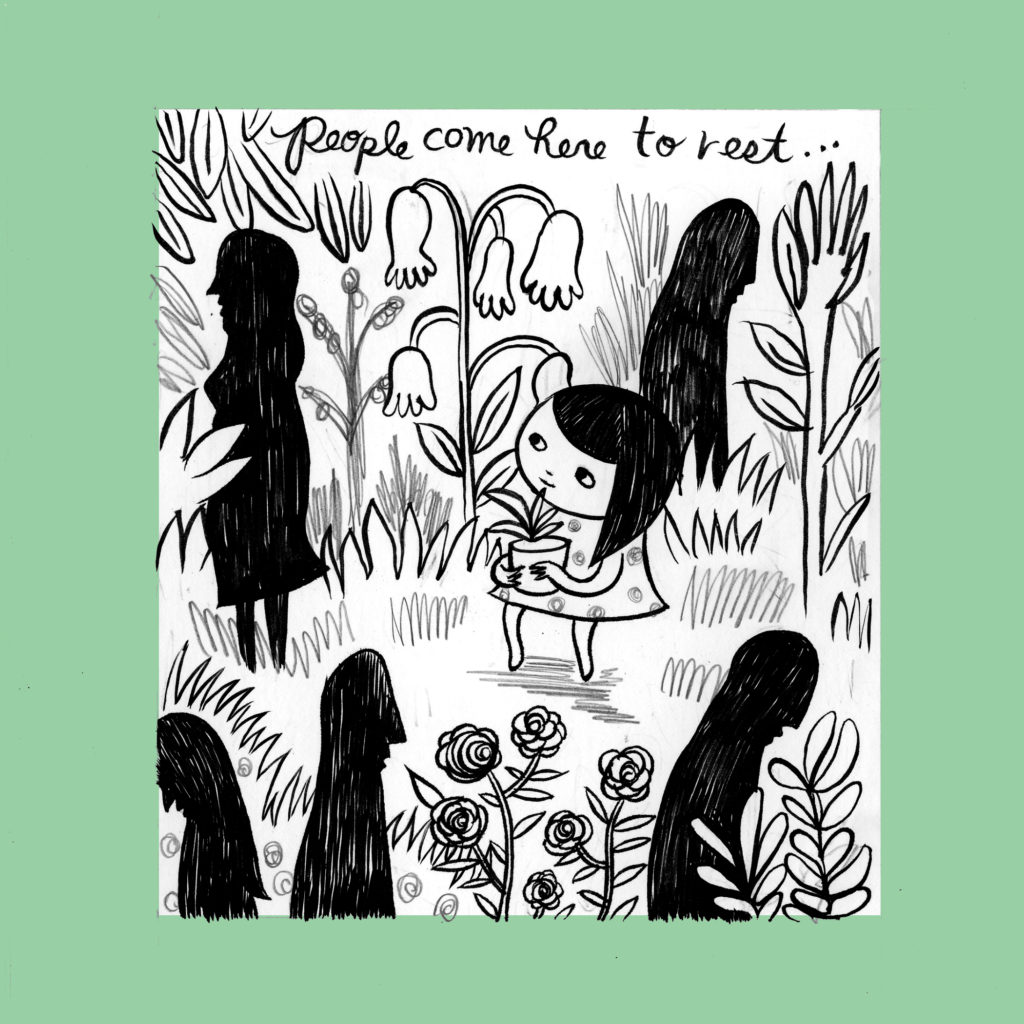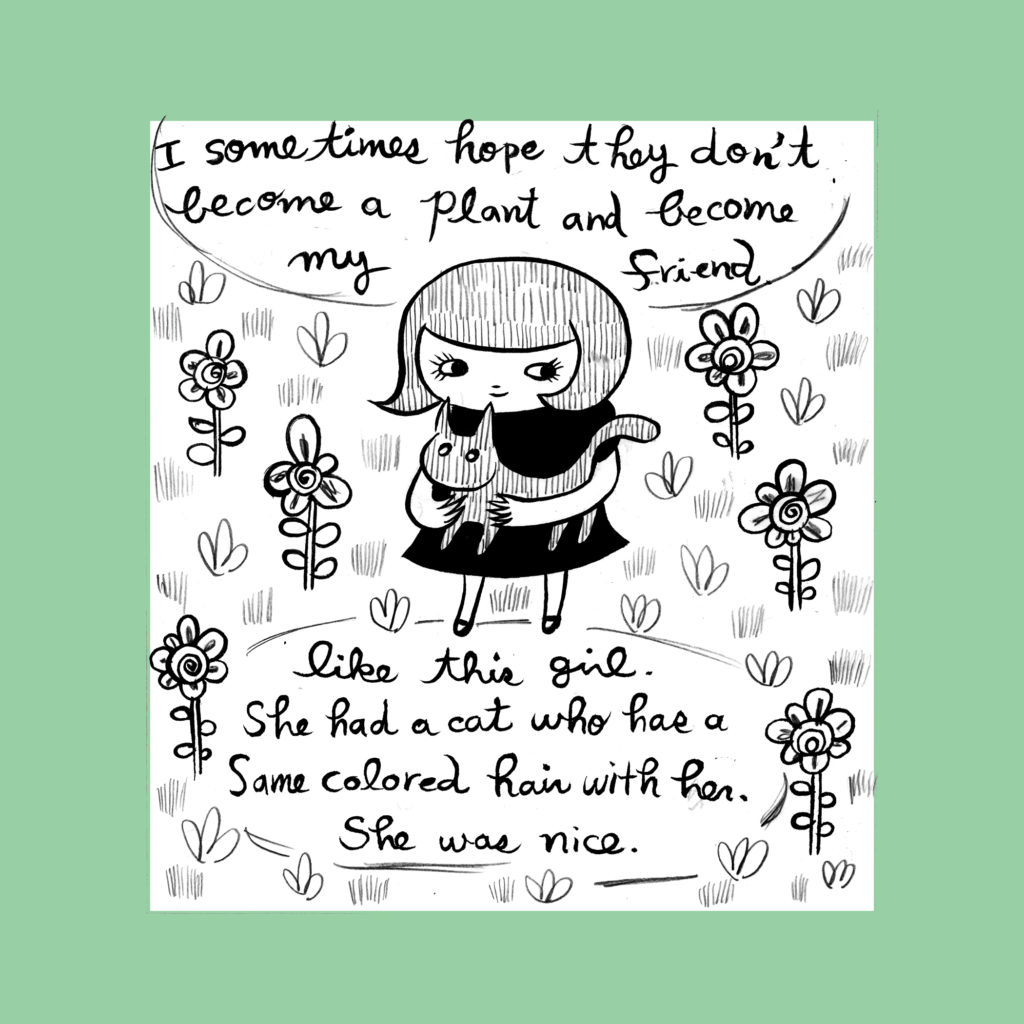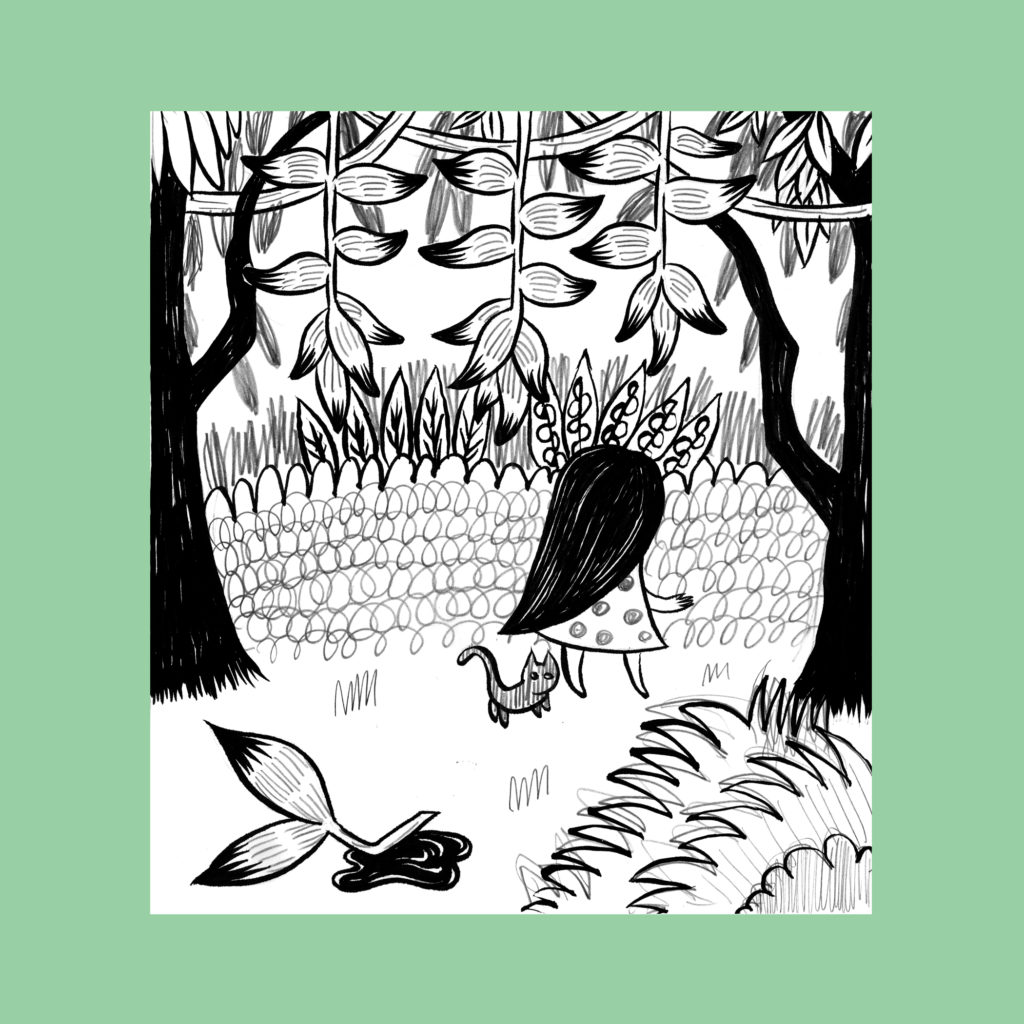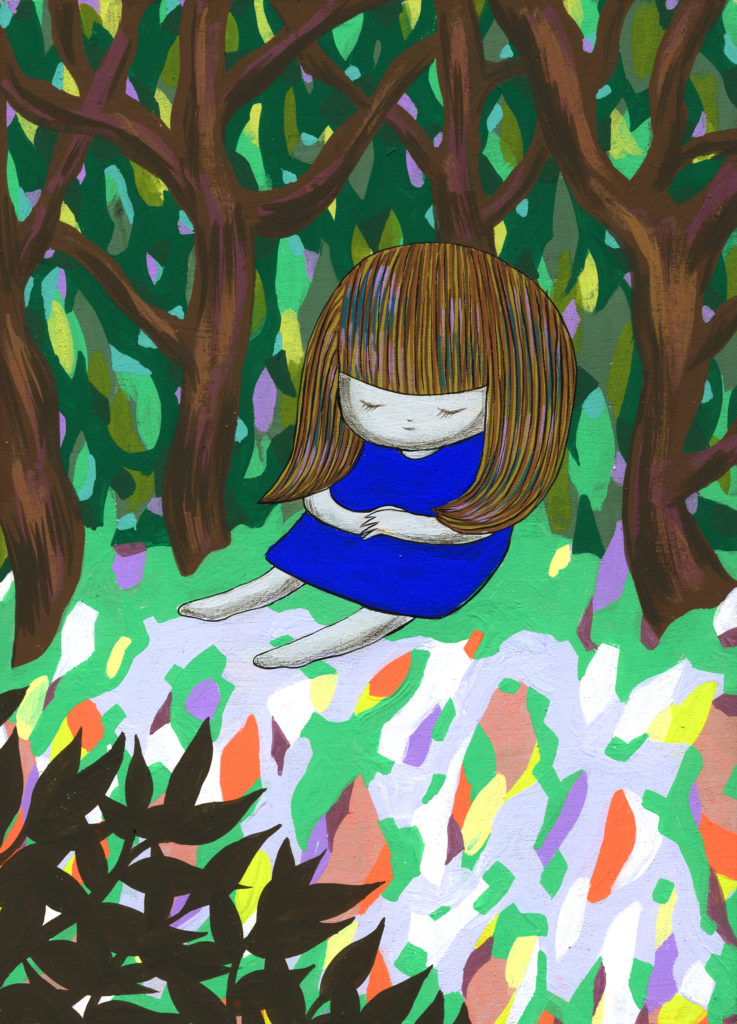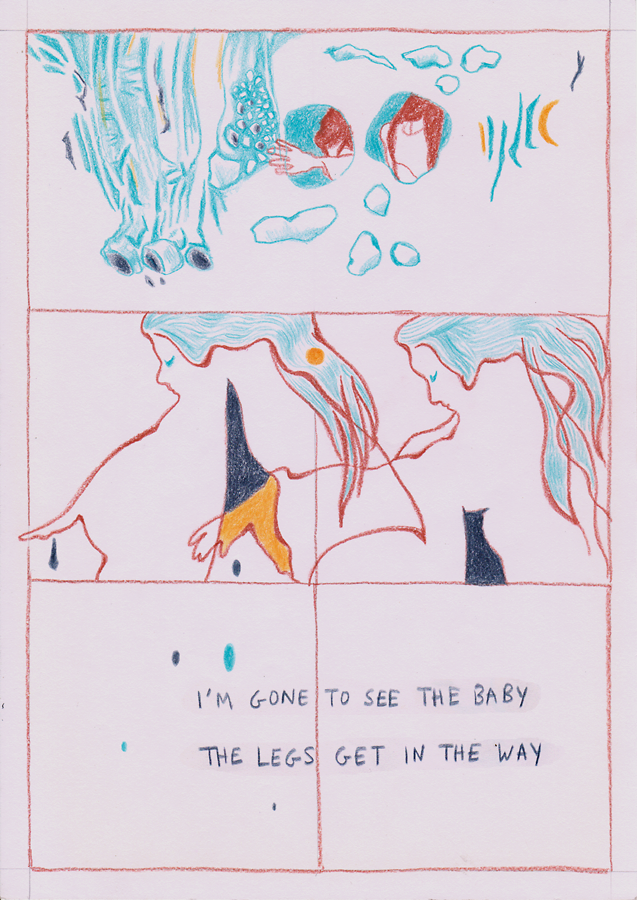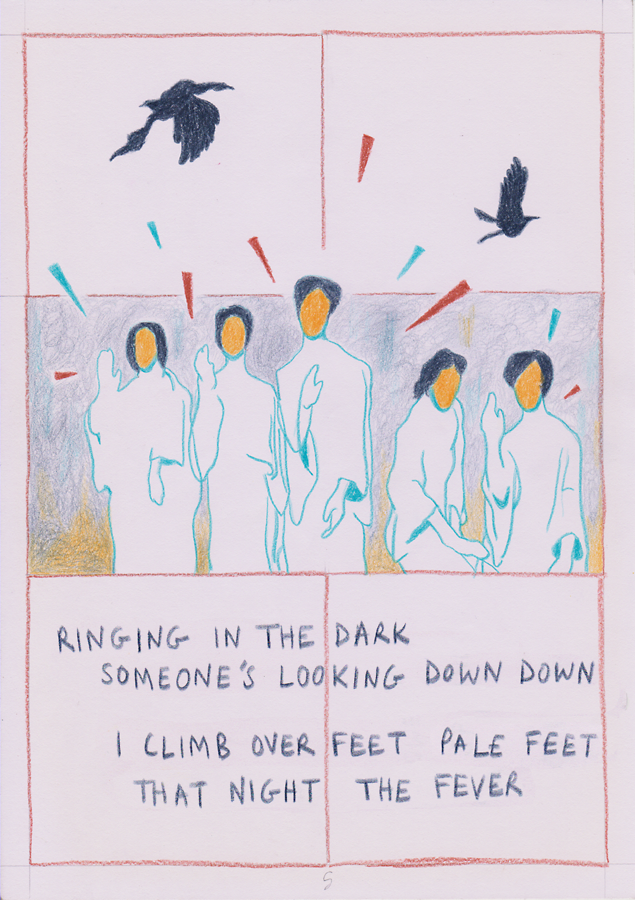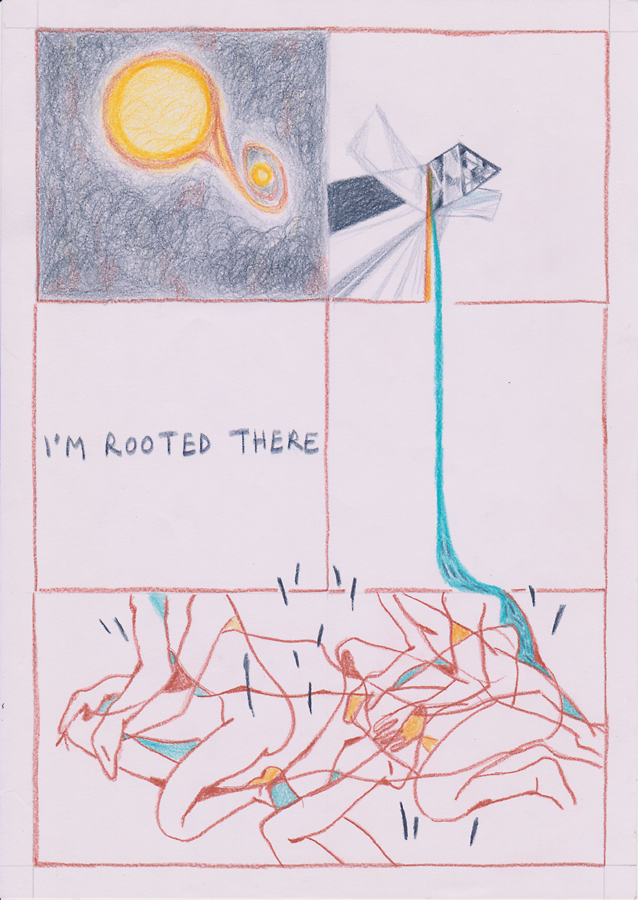Letters
Just like every month, the postal clerk will hand you a pile of mail for the houses on the outskirts of town. You’ll stash it in your bag, hop on your bike, and set off on your way. It’s a route full of somersaults and roundabouts you worked out yourself. The only goal: that her house be the final stop. You’ll ride through residential streets settled by well-off, foreign retirees from the capital, many of them there only for the summer. But She lives there all year long, so you’ll drop off magazines, postcards, catalogues in every mailbox—turning and spinning like a bee nears a flower—with her letter, postmarked from a far-off place, saved for last.
And like always, you’ll leave your bike in the shade beneath the carob tree and walk up to the country house, studying the outside wall, rusted and wild, now overrun with ivy. When you ring the doorbell the maid, Gertrudis, will answer, looking from side to side as if afraid someone might see. You’ll follow her into the unkempt garden with its overgrown grass and weeds, the weeping willow twisted into one big tangle, the palm trees drooping, the empty pool filled with brackish tree buds, and you’ll enter the house, the grand entrance hall, moving through hallways while the old woman mutters, like always, that this’ll be the last time, she doesn’t intend to participate in such sinful things, that this never happened when the senyor was a boy and his parents were still around. When you reach the inner patio opening onto the garden, toward the Montflorit forest, she’ll order you to sit in the velvet armchair and wait for the senyora, then quickly vanish, like always, through a door that, for an instant, will seem straight out of one of those songs your parents used to listen to.
You’ll rest there, on your own, among the roses and orchids. A few minutes will go by, and you’ll make good use of them by pulling out the letter, beginning to open it, giving it a quick once over before She arrives: fair skin, chestnut locks falling over slim shoulders, her eyes enormous and cheekbones high, pale lips, a delicate chin, shapely contours beneath her silken robe. Like always, She’ll be wearing barely anything and She’ll look at you with disdain, not saying a word, with a tripled contempt that She, since marrying so happily, has shown for people like you, the people from town, for workers like your father, for foolish eighteen-year-old kids like you. She’ll stretch out on the chaise-longue, right there before you, looking at you with a certain sorrow, requesting the letter; She’ll give it a quick glance and, like always, hand it back with anxious eyes, tormenting you with those long, long eyelashes. She’ll order you to read it:
My love,
just how every letter starts. You’ll clear your throat while She closes her eyes and rests her head, revealing her pale neck, soft, lowering her head to her breast, only to raise it once more while you continue
the days pass, they slip by without ever having started, identical to one another, and all the while I cannot stop thinking of you
and She’ll always open her eyes saying, no, start over again but slower this time, and louder. And you’ll ask yourself why you, much as you’re the nephew of a postman—who offered you the job of delivering these distant letters for a little pocket change, he’s already getting old and doesn’t have children and trusts that you’ll follow in his footsteps—why you, if you, much as you’re one of few people who knows how to read and write in this little town, if you don’t like speaking, you’re soft spoken, you don’t enunciate the words well, you aren’t especially . . . But you’ll do it, you’ll begin again, pausing for a long time at every comma, concentrating on every sound, singing it almost, realizing that the words form chains in a current floating above the rustle of the nearby sea and seagull shrieks and her agitated breath while you read
I miss you all the time. The weather is possessed; it rains day and night and when it is not raining, the mosquitos come out to feed. I am constantly covered in sweat. What is this war in the heart of the jungle? I am drenched in sweat all day long, like a second skin. It is eating me up inside. Idleness devours me whole. Some of my men have fallen ill. But I am well, as well as can be expected. I am hoping something will happen, but the wait is wearing me thin. It seems the enemy is closer each day, but never comes. Much like Achilles nearing the tortoise, only now the tortoise—the tortoise is I—never moves. Members of the landing party grow bored and despair. I learned that when night falls, they offer bits of glass to the natives, as if they were jewels, in exchange for carnal knowledge. At times they offer provisions. I should detain them but feel incapable of doing so; I cannot lose them, I do not possess the necessary strength, and sooner or later every man will be indispensable. On the other hand, I understand them: I myself dream every day and night of you, my love! Dearest, you’ll never know how much I miss your body.
And like always, you’ll catch a sigh, you’ll stealthily lift your gaze and see how her hand, with its milky skin, moves slowly down the blood-red silk, caressing her belly, her eyes closed, mouth half-open, and for a moment you’ll think it’s as if you’re the one doing it, as if that transfiguring of flesh was by your absent hand, and she commands you not to stop
In fact, you are already famous: I have hung up your picture on the wall in the cabin that serves as my bedroom and office, and everyone has seen you: everyone praises your beauty. It comforts me to have you here. In the thick of this hell, it helps me to remember you, to relive your kisses, your voice in my ear, your tongue brushing against my earlobe, those first days as husband and wife in the village tower.
It’ll be like always, how your heart leaps when out from the corner of your eye you notice how She, stirring some, has pushed up her dress, moving her hand below and starts stroking, grabbing her breast with the other. Your voice will tremble like always, but as it’s not the first time, now that you’ve already come twice to deliver those first missives from her husband, when they invited you in, made you read the third letter, and She did the same thing, and you stopped reading, frightened and fascinated all at once, the sight of her pink nipple, haloed by her areola and hard between her fingertips, when she noticed and shrieked furiously, she wanted you to keep reading, you pervert
Frankly, I have too much time on my hands. We live in tense calm while the enemy approaches. I spend my days awaiting news that arrives in bits and pieces. Hardly anything every happens here. I study maps and walk about, trying to familiarize myself with the terrain. It will be two weeks now since we caught a spy. I shut him up in a wooden cage, where he could neither sit nor lie. I know that the other natives secretly gave him food, but you can never know which ones. They hate us: we freed them, but they hate us. I interrogated him. I tortured him. He didn’t say a thing. Bastards: they possess the discipline that my men lack. I decided that, at the very least, it would be useful to make an example of him, a public punishment. We tied him upside down in the middle of the village square, and with his legs wide open, naked, we castrated him and left him there to bleed . . .
You’ll know that her fingers will slide between her legs, between curled hairs and thick nectars, fragrant, a scent that comes to you mixed with flowers, her weak moans; that her fingers tangle up in those blackish coils, shiny, and then descend, separating those swirls, discovering a pinkish slit, silky, that unfolds effortlessly like petals bursting through
. . . for an entire day. We made clear that such a destiny is what awaited the rebels. Those who attack civilization. But I am not quite sure: the indigenous are obdurate, irrational. They do not understand us, nor do they want to. My soldiers drink, fight amongst themselves, fornicate every night. They have become abominable; I resist them all, taking refuge in music and reading. I never grow tired of playing Bach on the violin, or of reading Verdaguer. I do not know what I would do without them. I make a speech from time to time. I attempt to improve morale. But the intense heat has wearied us . . . every night I myself think of your mouth atop mine, your lips around me, the nights when we went down to the beach to take a dip and your skin all salty and the color of moon
Like always, you’ll have a painful erection, unbearable; but She’ll already be on her knees, coming toward you, naked, her eyes dim, blind with desire. You’ll have to raise the sheet of paper while She, beneath you, pulls down your pants and underwear, and after staring at your member, fascinated, she passes over it with her left hand, warm, she’ll kiss it one, two times, tenderly almost, and she’ll take you into her mouth. But you know that even so you’ll have to keep reading.
What’s wrong is that the soldiers’ behavior is undermining our relationship with the locals, who are tired of their fighting and singing at late hours of the night, of the thievery, the rape (of women, girls, and, I shudder to admit, of a little boy). So far I have succeeded in holding them back. I’ve offered every excuse: that they stop slandering my soldiers, for example. But I can’t pretend any longer. I need reinforcements, but the commanding officers refuse to help. I need men in order to be rid of these rotten apples. Because when the natives begin feeling more anger than fear . . . But better not to think about that now, we can’t have you worrying. This is war, and we already knew that, right?
She commands you not to stop, before climbing on top of you, putting her back to you as she lowers herself little by little, fitting around your tapered member, moving up, moving back down, her buttocks there before you, balmy, all of it mixed with that sweet, warm aroma. You won’t extend your hand to touch the softer skin in the shade of her breast, like you did once before, when she turned around and screamed, just what are you thinking, and you learned once-and-for-all what your role in this game was
You cannot know how I miss that house in the country, and Gertrudis’ scolding when we spent all morning in bed, rolling around or sleeping, exhausted from those first nights. How I yearn for those midday breakfasts, those evenings we spent resting in the garden. I hope everything remains the same as before: that beautiful landscape, those simpletons you cannot tolerate.
You’ll read on between gulps that cut your breath, before She drags you to the floor and turns, positioning herself on top of you, sporadically moving her legs that now you can hold onto, now you can touch her breasts that hang trembling, while she puts her hand in front of your face, as if intending for you not to see her, or as if she doesn’t want to know who you are, because she’s no longer there, now she’ll only cry out, cry out a name that isn’t yours, and all of a sudden you’ll realize that you already came, that it’s over, and a heavy weariness attacks. You should read the end of the letter, but; She will demand it, like always, after pushing you out of her, your bodies separating, and you’ll read the last sentences while she cries, covering her face with her hand—in that moment you’ll think she seems younger—before telling you to leave, for you to collect the money on the table by the door, for you to not tell anyone about this.
It’ll be one of those days, like always, that you can’t take it anymore and instead of the letter you wrote imitating his careful handwriting, you’ll read the official letter from the Ministry that arrived six months earlier to inform her that Colonel Puigdellívol had fallen in a nocturnal ambush.
Though I do little here, as I have told you, things remain so disturbing that there is no possibility of my returning home for a few days; otherwise, it would have already been done. You cannot know how I long to touch you, my little pink thimble. But more pressing obligations call for my presence here.
I love you,
Lluís
Translator’s Note
“Letters” is the kind of story that creeps up on you, like the roving ivy that covers old houses in Catalonia where author Joan Todó was born and raised. Our eighteen-year-old protagonist, a xitxarel·lo with little life experience of his own, delivers mail to the rich, often foreign, residents on the outskirts of town. Unlike his fellow postmen, however, he has been charged with a special errand: reading out a young commander’s letters to his wife while he’s away at war in colonial Africa. And acts of reading and warring and yearning and fucking tangle the bodies together in both anticipated and disorienting ways.
But there’s no sentimentalism here. No moral of the story. Todó isn’t offering us respite from the anxieties of war with a series of romantic or sexual fascinations. Instead, his disquieting eroticism allows us to imagine the tragic ironies of European imperialism as they might have played out in the most ordinary of worlds. And, in the end, it’s the ordinary that terrifies; it’s the ordinary that speaks out of turn.
Megan Berkobien is pursuing a Ph.D. in Comparative Literature at the University of Michigan. Her writing has appeared in Poets & Writers and The Offing, and her translations from Spanish and Catalan have been published in Words without Borders, Asymptote, and Palabras Errantes, to name a few. When she’s not translating or teaching, she’s working on a dissertation about the politics of reproduction in nineteenth-century Catalan periodicals and museums.
Joan Todó (1977) is a writer and translator. To date, Todó has published four collections of poetry and short fiction, and his first novel, L’hortizó primer, was recently published by the prestigious press L’Avenç. A butxacades, the collection from which the story “Letters” sprawls out, is a sort of literary time machine, offering artifacts from across time and space. Todó’s literary criticism has appeared in several leading Catalan-language publications, including L’Avenç, Caràcters and Reduccions, and his most recent translation, a collection of Mark Strand’s poetry, came out earlier this year.



